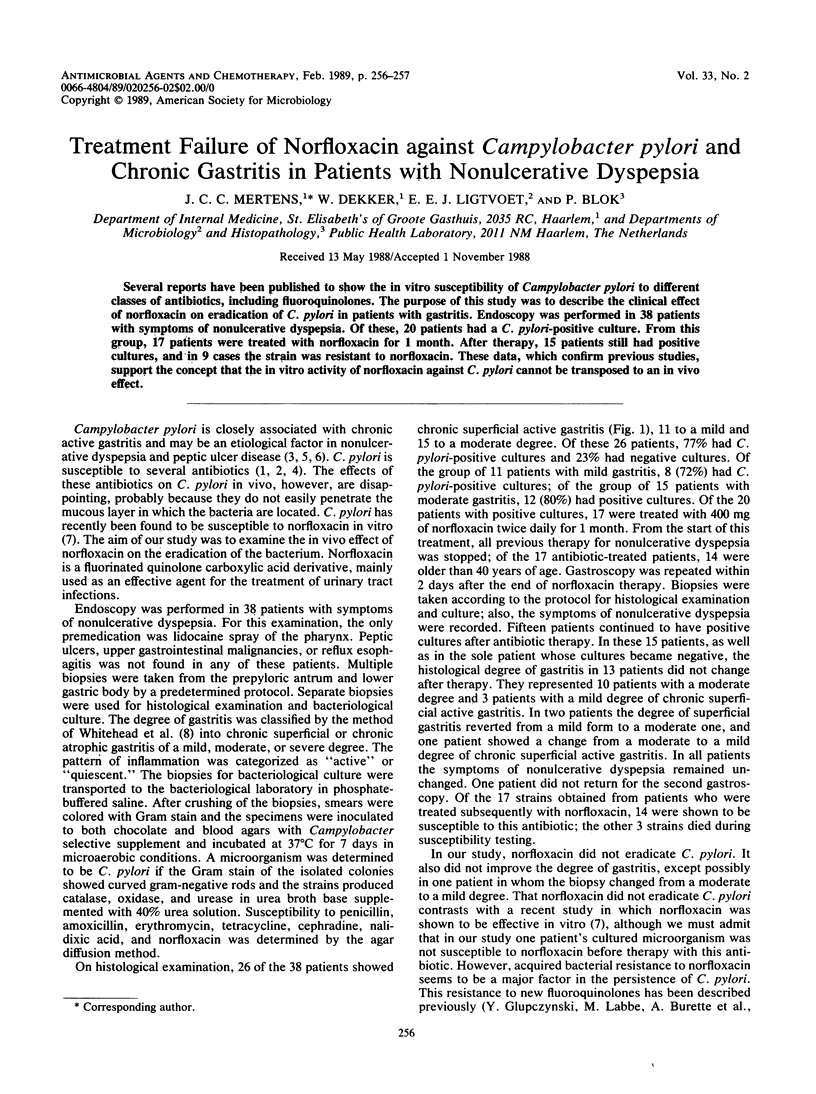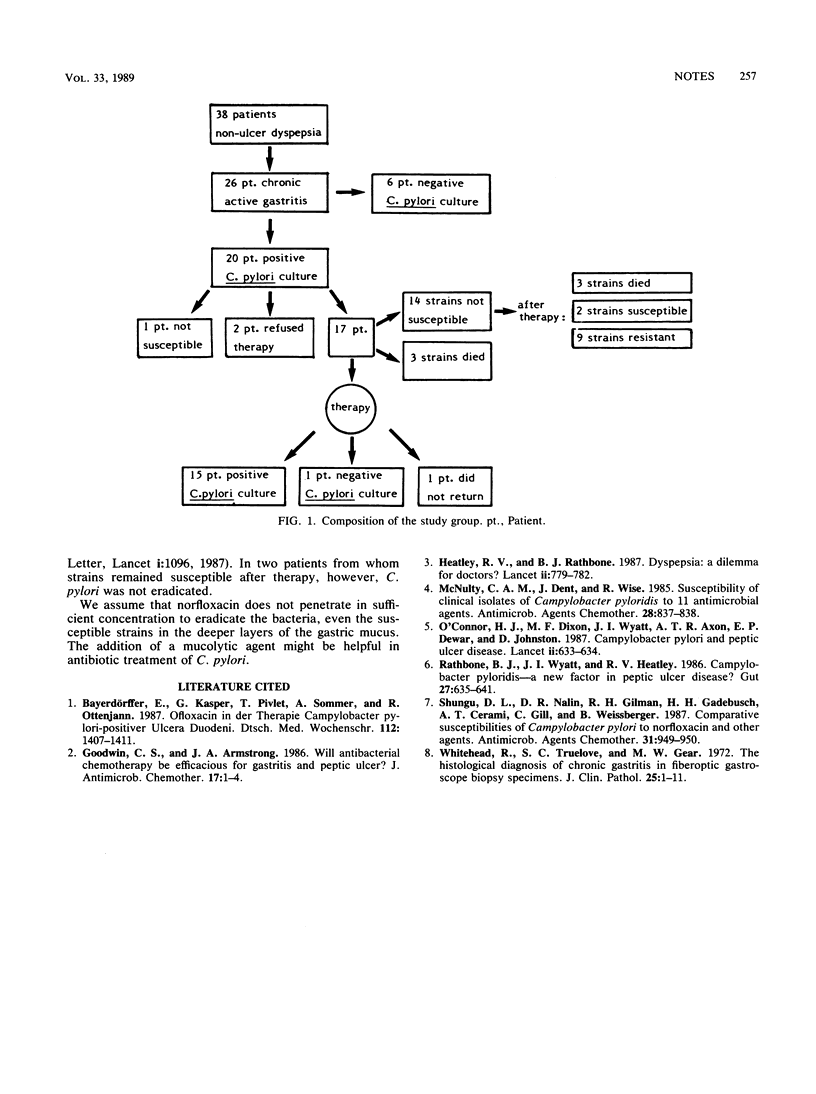Abstract
Several reports have been published to show the in vitro susceptibility of Campylobacter pylori to different classes of antibiotics, including fluoroquinolones. The purpose of this study was to describe the clinical effect of norfloxacin on eradication of C. pylori in patients with gastritis. Endoscopy was performed in 38 patients with symptoms of nonulcerative dyspepsia. Of these, 20 patients had a C. pylori-positive culture. From this group, 17 patients were treated with norfloxacin for 1 month. After therapy, 15 patients still had positive cultures, and in 9 cases the strain was resistant to norfloxacin. These data, which confirm previous studies, support the concept that the in vitro activity of norfloxacin against C. pylori cannot be transposed to an in vivo effect.
Full text
PDF

Selected References
These references are in PubMed. This may not be the complete list of references from this article.
- Bayerdörffer E., Kasper G., Pirlet T., Sommer A., Ottenjann R. Ofloxacin in der Therapie Campylobacter-pylori-positiver Ulcera duodeni. Eine prospektive kontrollierte randomisierte Studie. Dtsch Med Wochenschr. 1987 Sep 11;112(37):1407–1411. doi: 10.1055/s-2008-1068260. [DOI] [PubMed] [Google Scholar]
- Goodwin C. S., Armstrong J. A. Will antibacterial chemotherapy be efficacious for gastritis and peptic ulcer? J Antimicrob Chemother. 1986 Jan;17(1):1–3. doi: 10.1093/jac/17.1.1. [DOI] [PubMed] [Google Scholar]
- Heatley R. V., Rathbone B. J. Dyspepsia: a dilemma for doctors? Lancet. 1987 Oct 3;2(8562):779–782. doi: 10.1016/s0140-6736(87)92509-8. [DOI] [PubMed] [Google Scholar]
- McNulty C. A., Dent J., Wise R. Susceptibility of clinical isolates of Campylobacter pyloridis to 11 antimicrobial agents. Antimicrob Agents Chemother. 1985 Dec;28(6):837–838. doi: 10.1128/aac.28.6.837. [DOI] [PMC free article] [PubMed] [Google Scholar]
- O'Connor H. J., Dixon M. F., Wyatt J. I., Axon A. T., Dewar E. P., Johnston D. Campylobacter pylori and peptic ulcer disease. Lancet. 1987 Sep 12;2(8559):633–634. doi: 10.1016/s0140-6736(87)93031-5. [DOI] [PubMed] [Google Scholar]
- Rathbone B. J., Wyatt J. I., Heatley R. V. Campylobacter pyloridis--a new factor in peptic ulcer disease? Gut. 1986 Jun;27(6):635–641. doi: 10.1136/gut.27.6.635. [DOI] [PMC free article] [PubMed] [Google Scholar]
- Shungu D. L., Nalin D. R., Gilman R. H., Gadebusch H. H., Cerami A. T., Gill C., Weissberger B. Comparative susceptibilities of Campylobacter pylori to norfloxacin and other agents. Antimicrob Agents Chemother. 1987 Jun;31(6):949–950. doi: 10.1128/aac.31.6.949. [DOI] [PMC free article] [PubMed] [Google Scholar]
- Whitehead R., Truelove S. C., Gear M. W. The histological diagnosis of chronic gastritis in fibreoptic gastroscope biopsy specimens. J Clin Pathol. 1972 Jan;25(1):1–11. doi: 10.1136/jcp.25.1.1. [DOI] [PMC free article] [PubMed] [Google Scholar]


